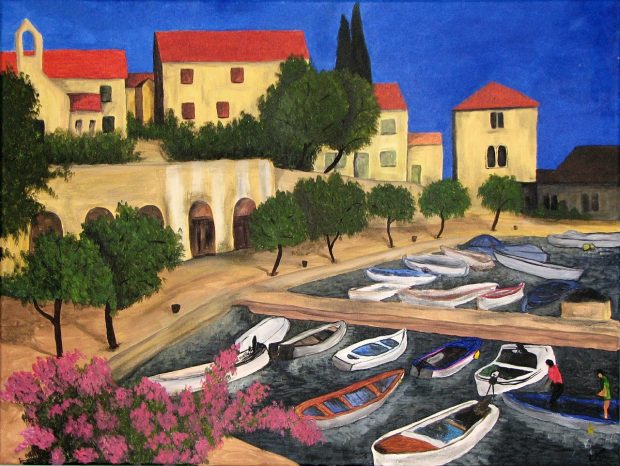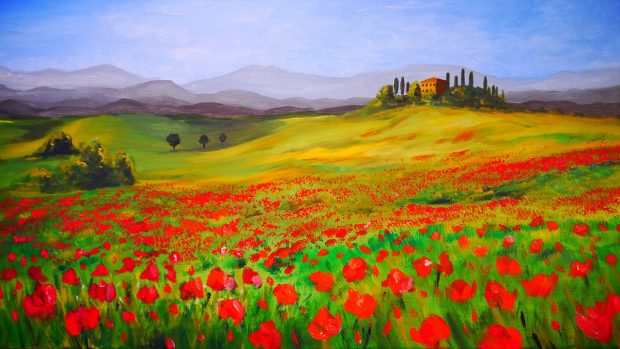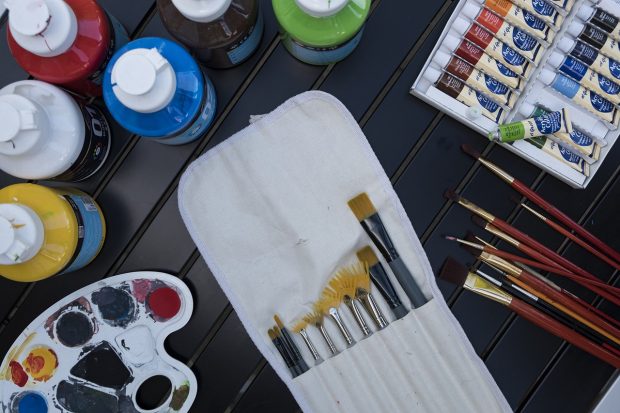If you’re looking to buy paint supplies, there are some things you should know, specially about what medium are you going to use them on. Acrylic paints offer some of the most versatile and forgiving opportunities for painters of all styles and formats.
Long-Lasting Artwork
The quality of acrylics is divided into two main categories. Artist quality acrylics include the products that professional painters use for their commercial artwork. Student’s quality acrylics include the products that are more suitable for beginners who want to try their hand at this art form before investing a significant amount of money in paint supplies.

Artist quality acrylics will produce results that are similar to high-quality oil paintings. With the right choice of medium, you can create a work of art that retains the movements of your brush or pallet knife for an interesting, painterly effect. These colors are suitable for abstract paintings as well as portraits and landscapes.
Student quality acrylics typically come in sets of primary and secondary colors so that you can mix them to create a shade or hue that fits your composition. These products are great for most casual art projects but may not retain their color or structure over many years.
Pigments Vs Hues
The color quality of acrylics is determined by the substance used to give it a particular shade. The two main types of acrylic coloring agents are pigments and hues. Pigments are the higher-quality type of coloring agent. Using these colors will result in a professional artwork that is suitable for commercial contracts. Hues are generally used for student paintings and other less formal applications.
Whether your acrylics use pigments or hues isn’t the only factor that determines the cost of your paints. Some pigments cost less than others, and earthy colors are the least expensive pigments of all. Browns and grays cost less than blues, greens, yellows, and reds because the pigment used to color these paints is harder to manufacture.
You can save money by purchasing your acrylics in a set of colors rather than in individual tubes or jars. Color sets typically include a full range of pigments or hues needed for a particular style of painting. For example, sets of landscape colors include greens, browns, blues, and other natural shades that are commonly used in landscape paintings. Likewise, portrait sets include flesh tones and other earthy colors needed for painting faces and clothing.
Most brands order their paints in a series of pigments or hues based on the quality level of the colors. For example, the least expensive earth colors of a series might be numbered one while the most expensive pigments might be numbered six or seven, depending on the number of colors in the series.
Avoiding Fugitive Colors
When you’re shopping for paint supplies, an important consideration to make is the level of permanence you want for your artwork. Permanence refers to the length of time your painting will last without fading or losing its structure or texture. Artist’s acrylics typically have high permanence and can retain their vibrancy and texture for as long as expensive oils.
The lightfastness of a paint is the measure of how well it holds up to exposure to light. Lower-quality paints will start to fade more quickly than more expensive paints, but this process typically doesn’t begin to happen for several years after the artwork is created. Paints that begin to fade early are known as fugitive colors.
The Perfect Thickness
A paint’s viscosity is an important quality that determines how much structure and texture it holds on its surface. If you’re painting on a canvas, you may want to use a heavy body acrylic. For detailing figurines and models, a thinner paint is usually more suitable.
You can easily alter the thickness of your paint with an acrylic medium. These products allow you to thicken or thin your paint without losing the brightness or vibrancy of your pigment.
With the right choice of acrylic color, you can create artwork that expresses your ideas with vibrant pigments, interesting textures, and long-lasting permanence. While you may believe that oils are better for creating works of art that last for generations, you may be surprised by the exceptional quality of acrylics for rendering realistic portraits, landscapes, and still life paintings.

















